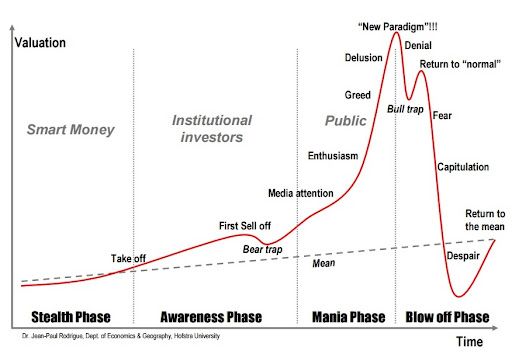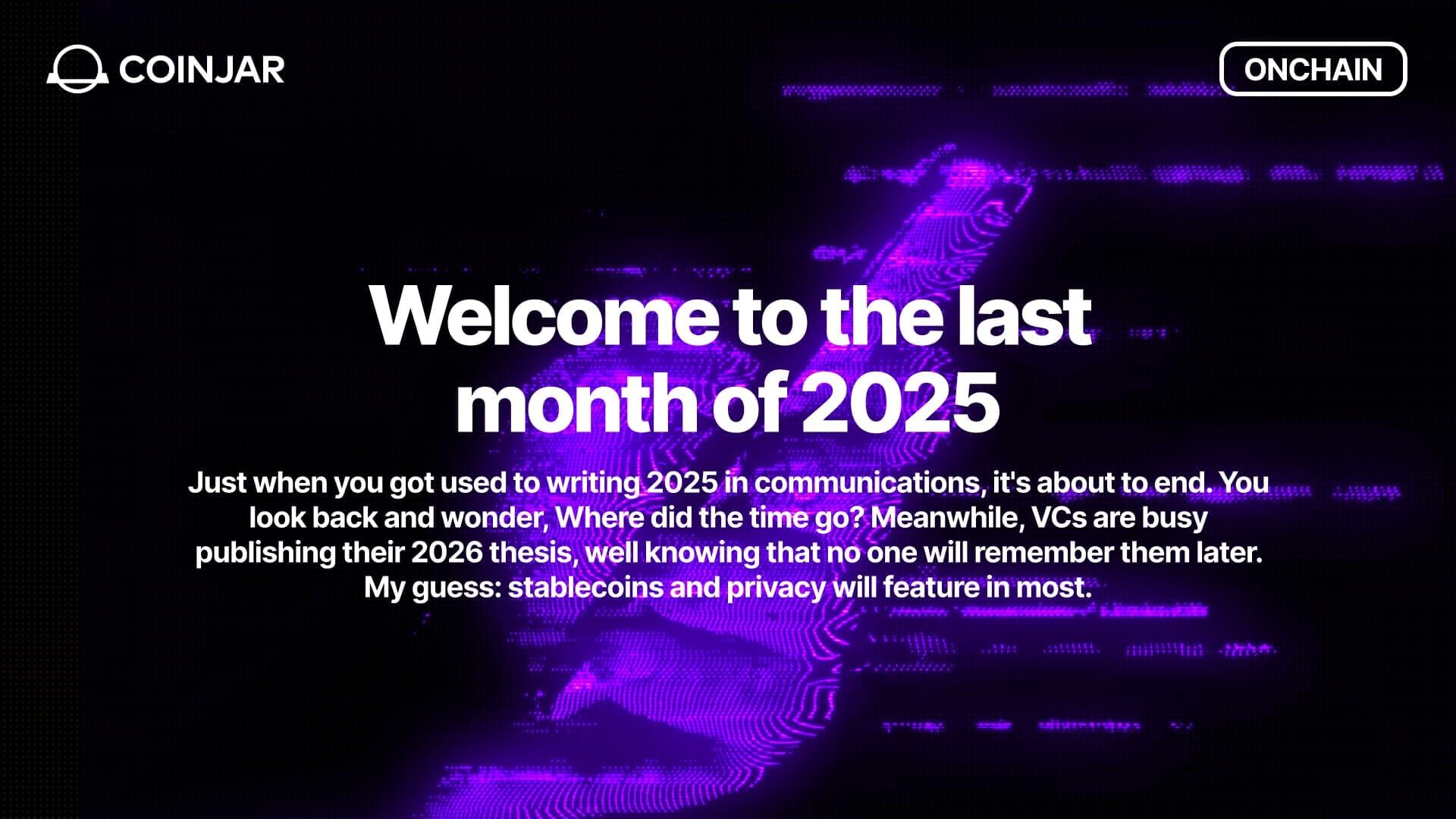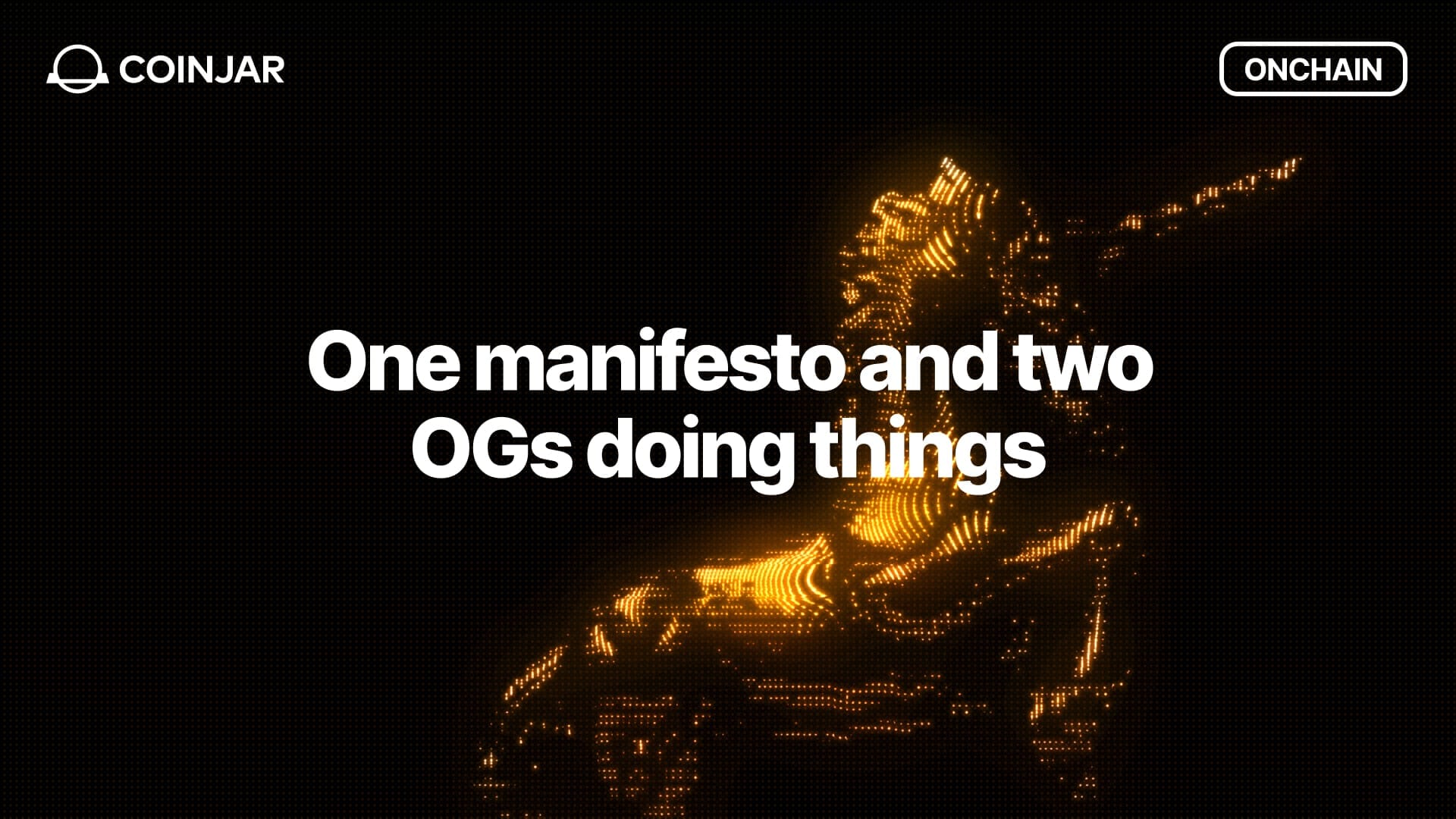Claim your free €20 Bitcoin bonus now! Just verify your ID. Weekly payouts every Friday! Don't invest unless you're prepared to lose all the money you invest. Take 2 mins to learn more.
Offchain: This Time is Different
May 26, 2022
Share this:

As the chill of a new crypto winter sets in, the past offers itself as a flawed guide.
Last year, during the height of the mania, people started talking about cryptocurrency launching into a new “supercycle” – basically a paradigm shift wherein the familiar boom-bust cycle would be replaced by one of perpetual, if more linear growth, a la the internet from 2005 on.
It’s a long-running joke in investment circles that everyone thinks “this time is different” and everyone is, eventually, wrong. As a general proxy for human fear and greed, free markets are intrinsically prone to speculative manias. The only thing that makes crypto different is the sheer velocity with which these cycles happen. (And you think the internet is immune? Just ask the Facebook stock price).
Well, we’ve had the boom. Now comes the hard part. Crypto has already been through some bear markets. We should know what to expect. But will this time actually be different?

Learning from the past
The issue with many of the predictions and assumptions made through the last bull run was that the sample size was insufficient. While the bubbles of 2013 and 2017 followed roughly similar patterns, the crypto-economies they represented were wildly different; 2021 was more different still.
But when prices were soaring, how easy it was to look back at the wildness of 2017 and say “we’re barely getting started”.
Now we’re on the downward arc and the temptation is to map the bleakness of 2018 onto our current situation. Already people are planning for the 2024 upcycle, as if all the possible permutations of international finance could be cleanly mapped onto the Mayan calendar.
To its adherents, that’s the whole point of Bitcoin’s mathematical certainty. But Bitcoin has never faced macroeconomic conditions like this, where interest rates are rising, energy costs are soaring and economies are tumbling towards recession.
After the dotcom collapse, it took the better part of a decade for the scions of web 2.0 to begin their inexorable takeover of the stock market. Could crypto be poised for a similar time in the wilderness?
Ctrl + Z, Ctrl + Y
To be clear, I don’t have any strong opinions as to what happens next, or how long this downturn might last. Rather it’s a reminder to keep an open mind in the face of unprecedented circumstances. Crypto’s only been here twice before; we’re still in the data-gathering phase.
What we do know is that, over a long enough timeframe, markets inevitably revert to the mean. What goes up must come down, and what descends into the depths of hell will eventually emerge spluttering into the light.
I’ve shared this speculative bubble chart before, but what’s often overlooked is the line, slowly ascending, around which all the excitement and despair occurs.

In many ways that line is the point of it all. It’s all well and good to chase shitcoins to the top of the new paradigm (*cough* supercycle *cough*) but your long-term focus should be on what the mean represents: the basic promise of blockchain technology and decentralised digital economies.
Ain’t nothing nice about it, but winter is your chance to step back and ask what that might still actually mean.
Luke from CoinJar
Please remember past performance is not a reliable indicator of future results. Don’t invest unless you’re prepared to lose all the money you invest. Due to the nature, complexity and volatility of crypto, it may be perceived to be a high‑risk investment. There are no government or central bank guarantees in the event something goes wrong with your investment.
CoinJar Europe Limited (CRO 720832) is registered as a VASP and supervised by the Central Bank of Ireland (Registration number C496731) for Anti-Money Laundering and Countering the Financing of Terrorism purposes only. CoinJar Europe Limited (CRO 720832) is registered as a VASP and supervised by the Central Bank of Ireland (Registration number C496731) for Anti-Money Laundering and Countering the Financing of Terrorism purposes only.
Share this:
On/Offchain
Your weekly dose of crypto news & opinion.
Join more than 150,000 subscribers to CoinJar's crypto newsletter.
Your information is handled in accordance with CoinJar’s Privacy Policy.
More from CoinJar Blog

Onchain: Welcome to the last month of 2025
December 3, 2025Just when you get used to writing 2025 in communications, it's about to end. You look back and wonder, Where did the time go? Meanwhile, VCs are busy publishing their 2026...Read more
Onchain: One manifesto and two OGs doing things
November 19, 2025Story One Wake up babe, new manifesto dropped Why ship app, when you can write manifestos instead, amirite? Or so the Ethereum Foundation & Co. must have thought as they sat...Read more
Onchain: It's getting dark out there
November 5, 2025Not just because of wintertime and crypto coins going down, but also because bad things keep happening in our industry. Before that, here's one positive sign. Story One x402...Read moreYour information is handled in accordance with CoinJar’s Privacy Policy.
CoinJar Europe Limited (CRO 720832) is registered and supervised by the Central Bank of Ireland (Registration number C496731) for Anti-Money Laundering and Countering the Financing of Terrorism purposes only.
Apple Pay and Apple Watch are trademarks of Apple Inc. Google Pay is a trademark of Google LLC.
This site is protected by reCAPTCHA and the Google Privacy Policy and Terms of Service apply.